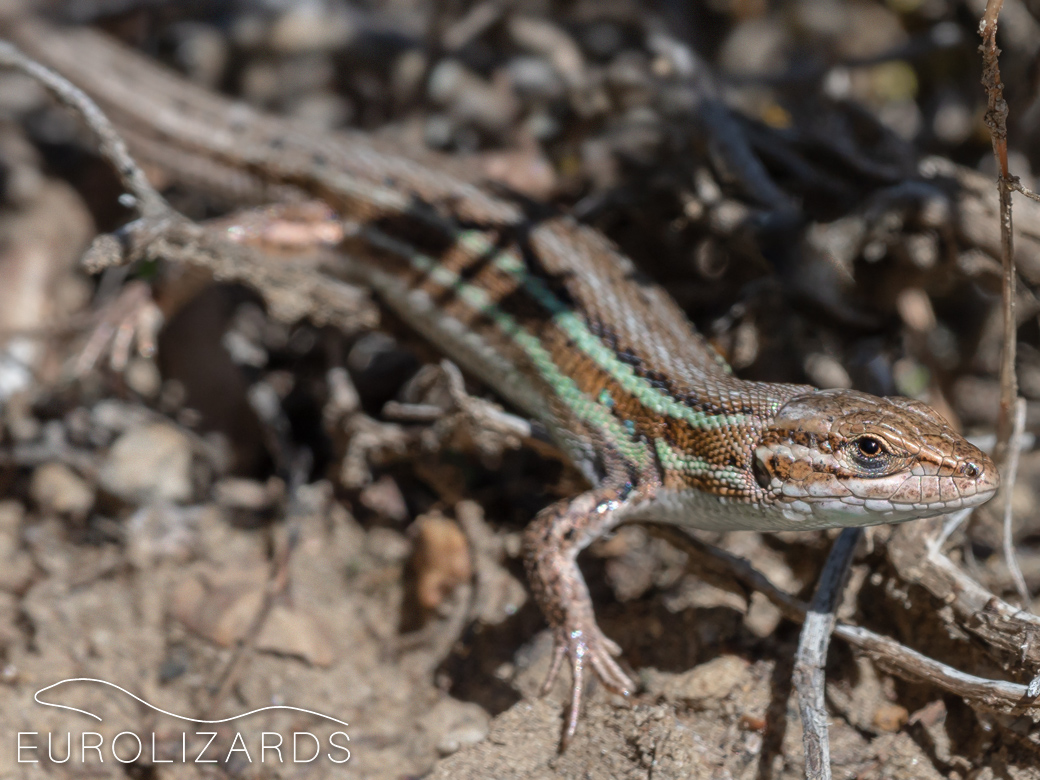Psammodromus hispanicus - Spanish Psammodromus

The Spanish Psammodromus is a small, ground-dwelling species, which occurs in eastern Central Spain. It is a somehow mysterious species: It is only known from a few stations so far and no one exactly knows its distribution range - although it may be quite large. Spanish Psammodromus seems to have a preference for habitats with rather continental climate and can even cope with cold winters. It inhabits open habitats but also pine forests up to 1500 meters altitude (e.g. Sierra del Agua / Albacete).
Psammodromus hispanicus differs from Psammodromus edwarsianus by the lack of a supralabial scale below the subocular scale.
However, distinguishing between Psammodromus hispanicus and Psammodromus occidentalis by external characters may be rather impossible - and probably, exploring the distribution limit of these species in the endless plains of Kastilia-La Mancha / Extremadura may not be the most rewarding task...
With regard to other small Lacertid species in its range, it can be identified by its typical back pattern: Males frequently show a characteristic pattern of black and white bars; females frequently have greenish lateral stripes.
(Sub-)Adult Acanthodactylus erythrurus may have similar patterns but are much bigger.





EUROLIZARDS - The Home of European Lizards! © Birgit & Peter Oefinger
